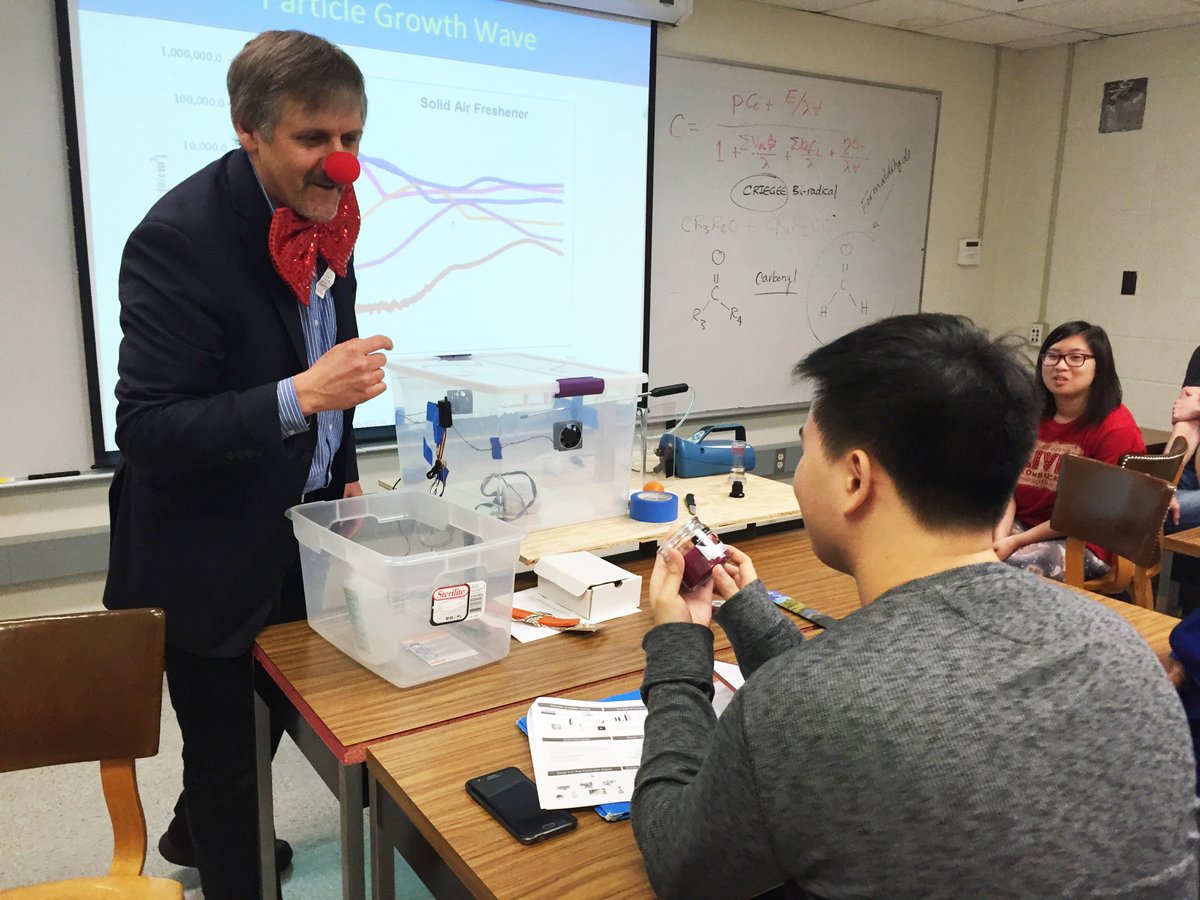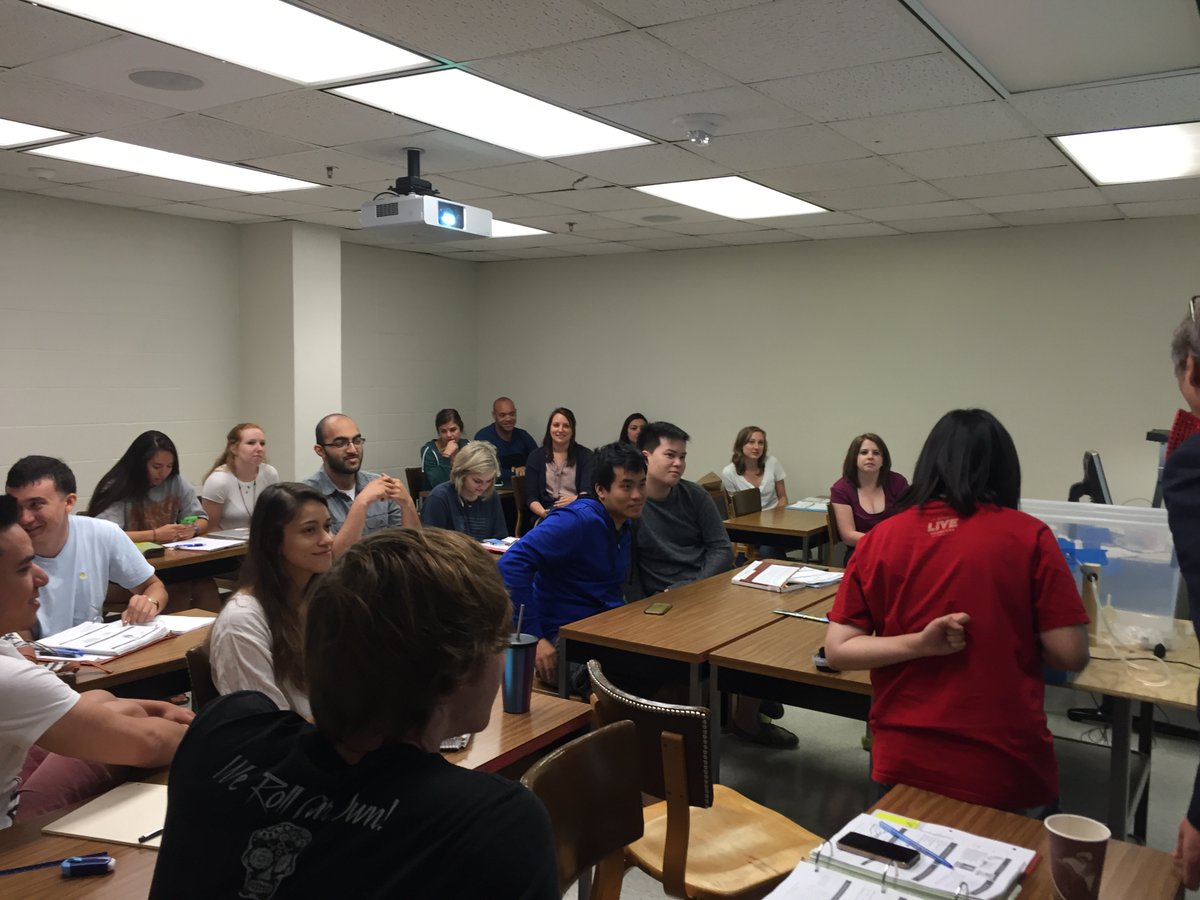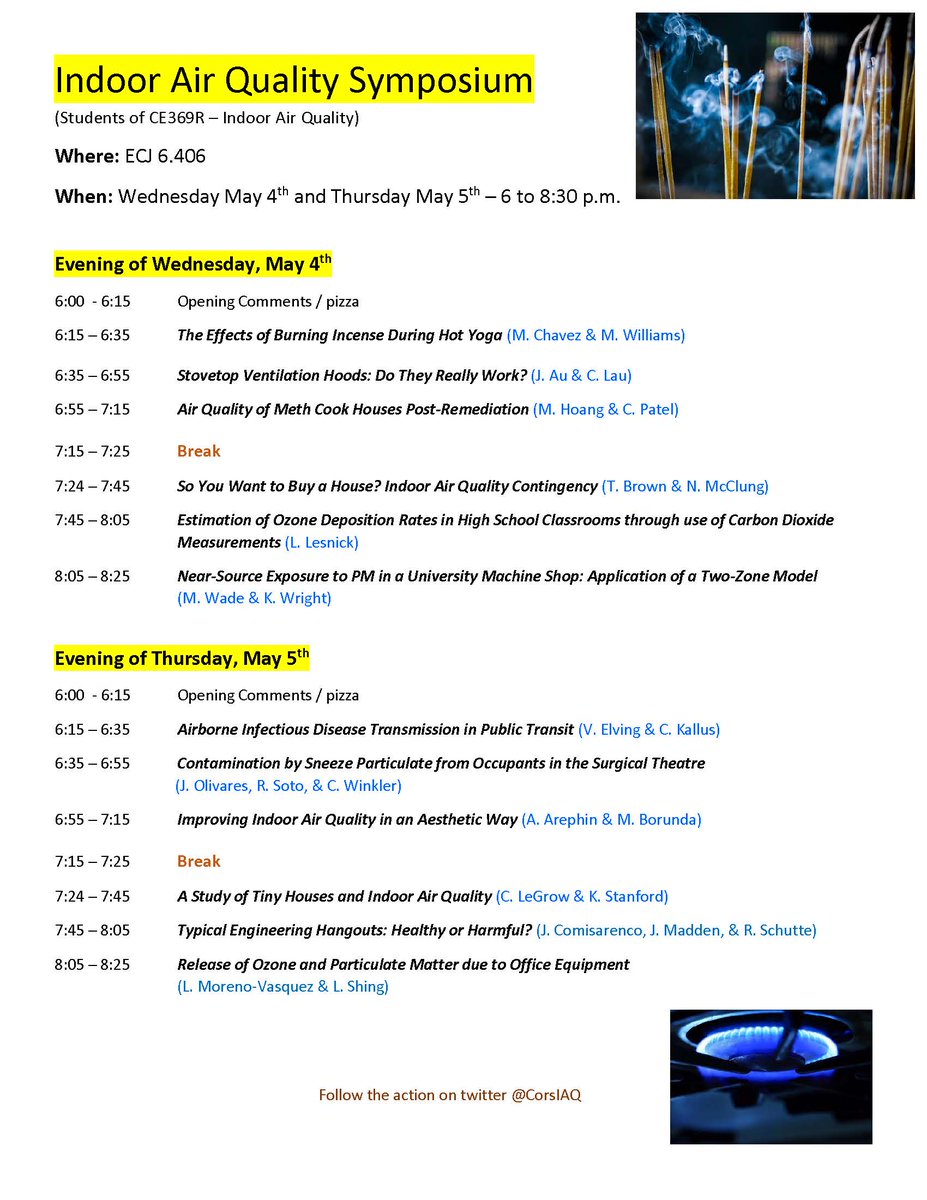
1/ Teaching Indoor Air Quality
I taught both undergraduate and graduate indoor air quality classes for many yrs at UT Austin. Proud of the fact that many current professors (and some department chairs) took my courses as students & are now teaching a new generation.
I taught both undergraduate and graduate indoor air quality classes for many yrs at UT Austin. Proud of the fact that many current professors (and some department chairs) took my courses as students & are now teaching a new generation.
2/ I loved infusing my research into lectures, having students bring different scented products to the classroom, exposing them to a small amount of ozone and measuring ultrafine particle formation (image). We also measured rebreathed fraction in the classroom, etc. 



3/ Every class would have an assignment with CO2 analyzers checked out to groups w/ 1 wk to measure avg CO2 concentrations and rebreathed fraction & then use the Rudnick-Milton model to estimate probability of common cold & flu transmissions across campus (50+ locations/class)
4/ For those new to the field & who might be thinking of teaching an #IAQ course in the future, my undergraduate syllabus (last time taught) is here: corsiairquality.files.wordpress.com/2020/08/ce369r…
Grad syllabi available at corsiaq.com. HW assignments & more lecture notes to be posted soon.
Grad syllabi available at corsiaq.com. HW assignments & more lecture notes to be posted soon.
5/ Every undergraduate and graduate course would always end with a multi-night symposium of research presentations by teams. I'd provide the food and drink each night and advertise to local companies & across campus. Had some great presentations and a lot of fun.
6/ Term project requirements are listed at the end of the syllabus referred to above, along with "Corsi's Rules" for effective PowerPoint presentations. I will be tweeting some of the posters for these events to illustrate the topics.
7/ Some student groups wanted to do experimental work and I did my best to accommodate them in my lab or with field equipment. For example, one undergrad group studied particle and VOC emissions from scented paraffin, beeswax and soy candles (great project).
8/ Ozone concentrations & back-calculated emissions in a photocopy store, emissions from vaping, local exhaust for control of particulate matter, exposure and control strategies during indoor cleaning, etc.... A poster for one symposium here. 

9/ Students loved the hands-on experiences, being able to tie findings back to basic principles taught in the course & sharing their findings with classmates and others. And I loved to witness their discovery and ability to make connections.
10/ Having fun was always part of my courses (at least for me 🤣). In my undergraduate fluid mechanics course I would always compose a song & play it during the last lecture (w/ guitar) with every student's name & every topic covered during the semester. Once w/ 77 students! 

11/ The lecture before I'd pass around a digital camera & students would photo person next to them holding up a sign w/ something funny about fluid mechanics (lots of guillotine jokes about head loss & dental jokes about cavitation). These would cycle on the screen as I sang.
12/ I've done a lot of research over 3 decades & was an endowed research chair at a great university. But for me the thrill of successful proposals & papers never stacked up to the thrill of teaching, mentoring, & observing students get excited/inspired about learning a subject.
• • •
Missing some Tweet in this thread? You can try to
force a refresh




